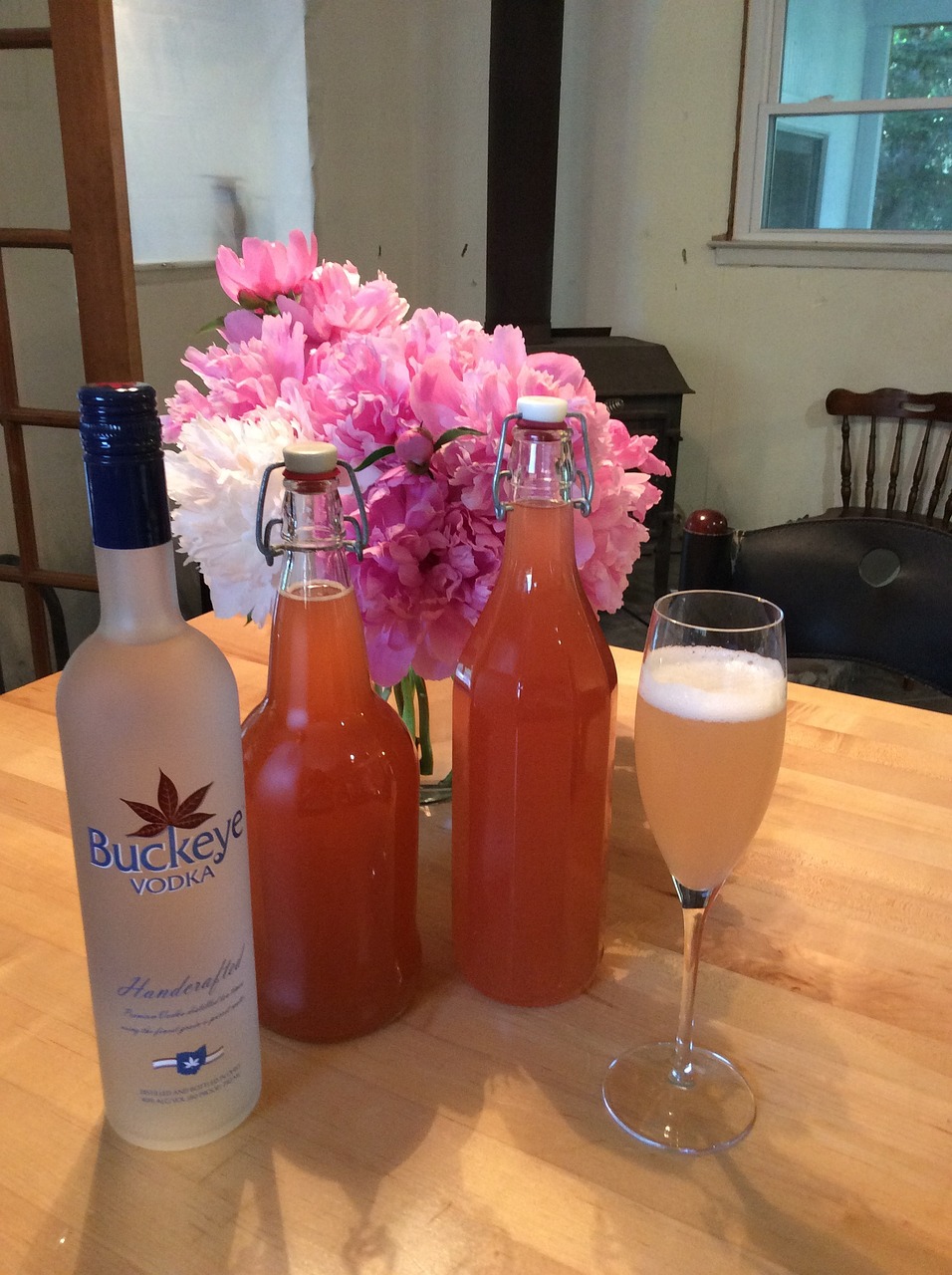Are you a fan of craft beer or fine wine? Have you ever considered making your own?
With home brewing, you can take your love for these beverages to the next level and create something truly unique. Not only is home brewing a fun hobby, but it also allows you to have complete control over the ingredients and flavors of your brew.
To get started, you’ll need some basic equipment and supplies, including a brewing kettle, fermenting vessel, and various ingredients like hops, grains, and yeast. But don’t worry, it’s easier than you might think!
With a little patience and creativity, you’ll soon be on your way to creating delicious beers or wines that you can share with friends and family.
So let’s dive in and discover the joy of home brewing!
Getting Started with Home Brewing: Equipment and Supplies
Before you start home brewing, it’s important to have all the necessary equipment and supplies.
Essential safety equipment includes gloves, goggles, and a thermometer. You don’t want to risk getting burned or injured while brewing, so make sure you have these items on hand.
Additionally, it’s important to have proper sanitation supplies such as a sanitizer solution or tablets, as well as bottles and caps for storing your finished product.
When it comes to equipment, there are budget-friendly options available. You can start with a basic kit that includes a fermenting bucket, airlock, and siphon.
As you become more experienced, you can invest in additional equipment such as a hydrometer and a wort chiller.
You can also save money by purchasing ingredients in bulk and reusing bottles.
With the right equipment and supplies, you’ll be well on your way to creating your own delicious beer or wine.
Choosing Your Ingredients: Hops, Grains, and Yeast
When it comes to making a delicious batch of beer or wine, you’ll want to carefully consider the hops, grains, and yeast you choose to use.
The type of hops you choose will greatly affect the flavor and aroma of your brew. There are two main types of hops: bitter and aromatic.
Bitter hops add a sharp, bitter taste to your beer, while aromatic hops add a more floral, citrusy aroma. It’s important to choose the right hops for your recipe to achieve the desired flavor profile.
Another important ingredient to consider is the yeast. Different yeast strains can greatly affect the taste and texture of your beer or wine.
Ale yeast ferments at a warmer temperature, resulting in a fruity, full-bodied flavor. Lager yeast, on the other hand, ferments at a cooler temperature and produces a more crisp, clean taste.
Choosing the right yeast for your recipe is crucial in achieving the desired taste and texture of your homebrew. Take the time to research different yeast strains and experiment with them to find the perfect combination for your next batch.
The Brewing Process: From Boiling to Fermentation

Get ready to experience the transformation of ingredients into a tantalizing elixir as you take on the brewing process, from boiling to fermentation.
After boiling the wort, the next step is cooling it down. This is important to avoid killing the yeast when it’s added. The yeast will then begin the fermentation process, where it consumes the sugar in the wort and produces alcohol and carbon dioxide.
However, brewing mistakes can happen, and fermentation troubleshooting may be necessary. One common problem is stuck fermentation, where the yeast stops working before all the sugar has been consumed. This can be caused by a number of factors, such as incorrect temperature or pH levels.
Another problem is bacterial contamination, which can result in off-flavors and spoil the batch. To avoid these issues, it’s important to follow proper sanitation procedures and monitor the fermentation closely.
With a little patience and attention to detail, you can create a delicious beer or wine that you can proudly share with friends and family.
Experimenting with Flavors: Tips for Customizing Your Brew
Ready to take your brewing game to the next level? Experimenting with different flavors is a fun way to customize your brew and create a unique taste experience.
One way to add flavor to your beer or wine is through fruit infusions. This method involves adding fresh or frozen fruit, such as berries or citrus, to your brew during the fermentation process. The natural sugars in the fruit will ferment along with the rest of the ingredients, creating a delicious and fruity flavor profile.
Another way to add flavor is through spice blends. This method involves adding spices, such as cinnamon or ginger, to your brew during the boiling process. The heat from the boiling water will extract the flavors from the spices and infuse them into the liquid.
You can experiment with different spice blends to create a wide range of flavors, from warm and spicy to sweet and savory. Just remember to start with small amounts of spices and taste test frequently, as they can quickly overpower the other flavors in your brew.
Bottling and Enjoying Your Home Brewed Beer or Wine
After the fermentation process is complete, it’s time to bottle your delicious creation and share it with friends. But before you do that, you need to make sure your beer or wine is carbonated properly.
There are different carbonation techniques you can use, such as natural carbonation and forced carbonation. Natural carbonation involves adding a small amount of sugar to the bottle before sealing it, which will create carbon dioxide as the remaining yeast consumes the sugar. Forced carbonation, on the other hand, uses carbon dioxide directly injected into the beer or wine to create the bubbles.
Once your beer or wine is properly carbonated, it’s important to follow aging recommendations. Some beers or wines are best consumed fresh, while others benefit from aging. For example, high alcohol content beers or full-bodied red wines may require aging to mellow out and develop more complex flavors.
Generally, you should store your beer or wine in a cool, dark place to allow it to age properly. With a little patience and attention to detail, you’ll soon be able to enjoy your home-brewed beer or wine at its very best.
Frequently Asked Questions
What are the legal requirements for home brewing beer and wine?
To legally home brew beer or wine, you need to research permits, regulations, legal issues, and restrictions in your area. Check with your state and local authorities to ensure you are following all necessary guidelines.
How can I troubleshoot common problems during the brewing process?
To troubleshoot common brewing problems, focus on temperature control and fermentation time. Make sure your yeast is active, sanitize all equipment, and use a hydrometer to measure gravity. Adjust as needed to ensure a successful brew.
Can I use wild yeast or other non-standard ingredients in my brew?
Experimenting with wild yeast and unique ingredient combinations is a fun and creative way to customize your brew. However, it’s important to research and understand the potential risks and effects before trying something new.
How long does it typically take for beer or wine to be ready for consumption?
Beer and wine are typically ready for consumption after weeks or months of fermentation. The fermentation timeline and flavor development depend on various factors such as yeast strain, temperature, and ingredients used.
Are there any health risks or concerns associated with home brewing?
When brewing at home, it’s important to follow safety guidelines to avoid contamination and potential health risks. Proper sanitation and handling of ingredients can prevent harmful bacteria from growing in your beer or wine.
Conclusion
Congratulations! You’ve successfully brewed your own beer or wine. The joy that comes from creating something from scratch is immeasurable, and the satisfaction of enjoying your own creation is truly priceless.
As you continue to brew, don’t be afraid to experiment with different flavors and techniques. The beauty of home brewing is that there are no rules, and you have the freedom to create something truly unique.
So grab your equipment, choose your ingredients, and let your creativity flow. Cheers to your next batch of delicious home brewed beer or wine!






